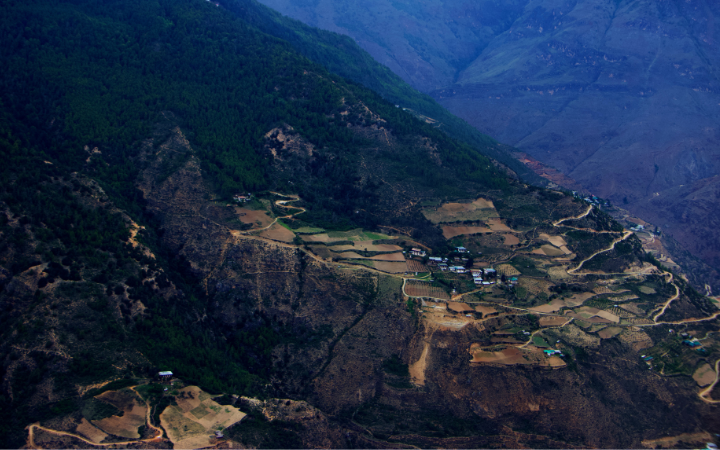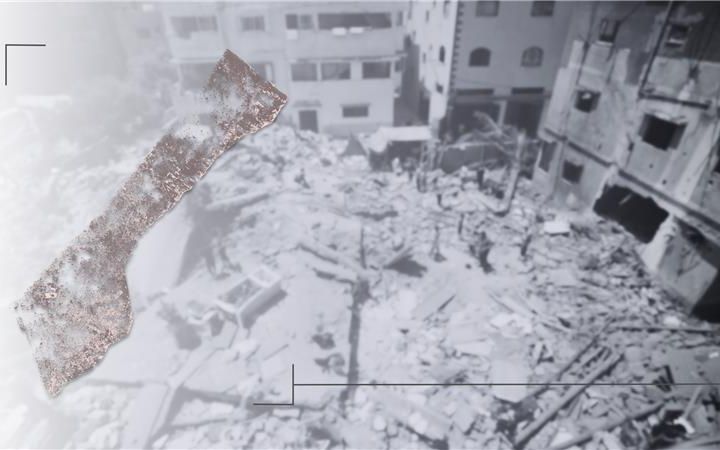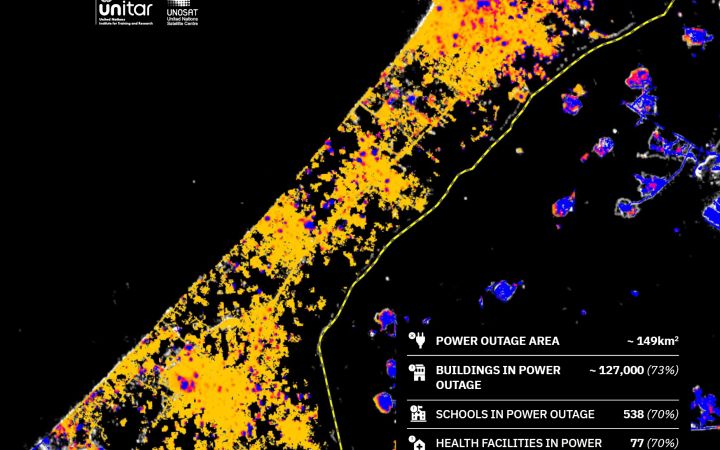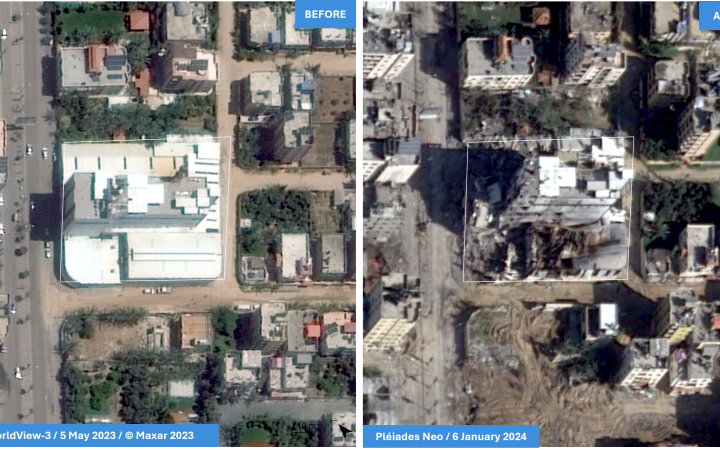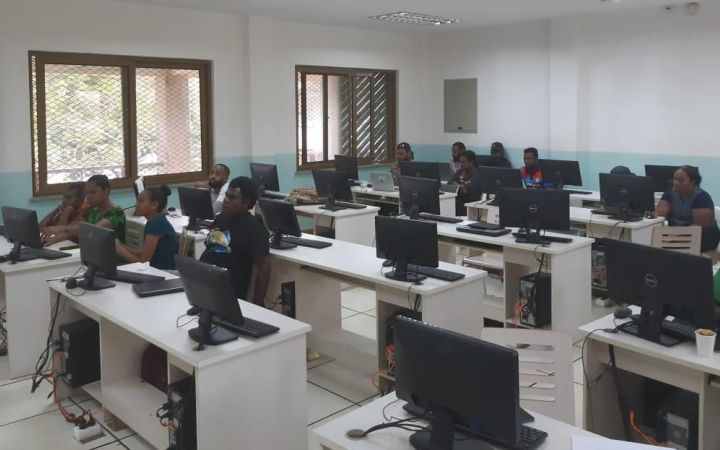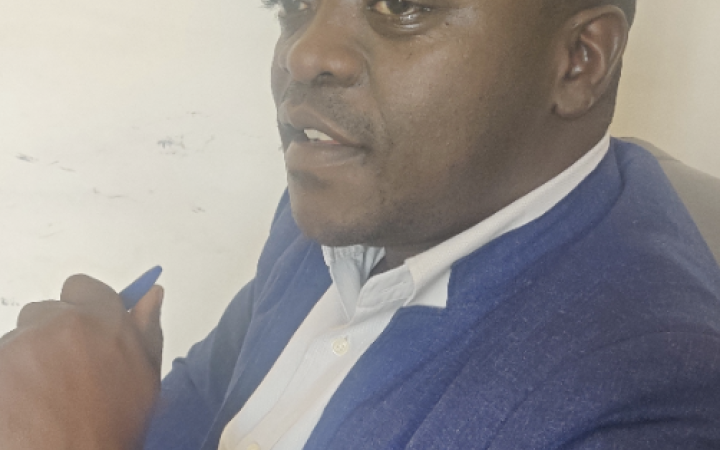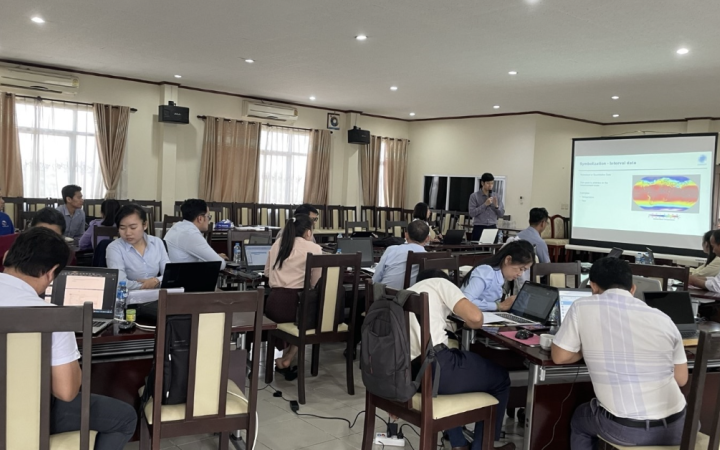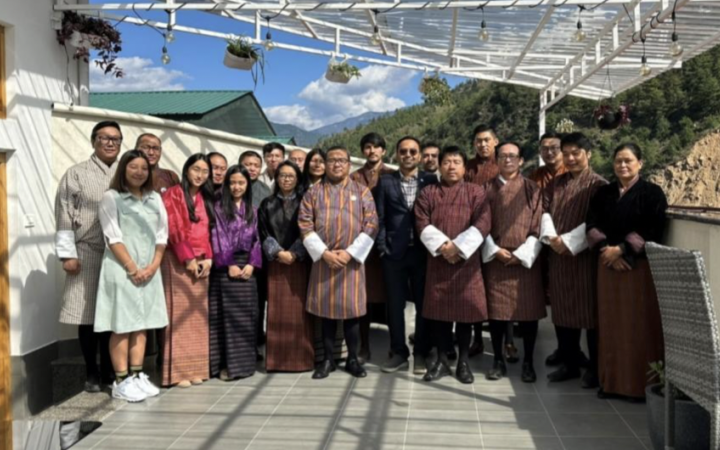Displaying 1 - 10 of 29
The United Nations Satellite Centre (UNOSAT), part of UNITAR, delivers satellite analysis, training, and capacity development to UN entities and Member States. We leverage geospatial technologies to support humanitarian response, sustainable development, and resilience building worldwide. Through satellite analysis and targeted training initiatives, UNOSAT empowers UN entities and Member States to leverage geospatial technologies for evidence-based decision making. The project “Strengthening Capacities in the Use of Geospatial Information for Improved Resilience in Asia-Pacific and Africa”, implemented between 2021-2024 with funding from the Norwegian Agency for Development Cooperation (NORAD), supported eight countries across Asia-Pacific and Africa in strengthening their geospatial capabilities to address development challenges. The following case study from Bhutan demonstrates the transformative impact of this initiative.
In March 2025, two consecutive earthquakes—measuring 7.7 and 6.7 magnitude — struck central Myanmar, causing widespread destruction. In the worst-affected areas, the earthquakes left 6.3 million people in urgent need of assistance and protection. Prior to the disaster, 4.3 million people were already in need in these areas. The earthquake pushed an additional 2 million people into crisis.
Since October 2023, UNOSAT and FAO have collaborated to assess the impact of the crisis on agriculture in the Gaza Strip. Using satellite imagery and geospatial analysis, they monitored damage to cropland and greenhouses, essential for food security. By December 2024, 75% of Gaza’s cropland was severely affected, with over 5,600 greenhouses damaged or destroyed. This data has been crucial for FAO’s food security assessments, humanitarian coordination, and targeted interventions to support farmers. The partnership also led to methodological improvements, enhancing decision-making and resource allocation.
Micky Welin's journey in disaster risk management (DRM) showcases the power of education and collaboration in enhancing disaster preparedness and response. Working as the Planning and Logistics Support Officer at Vanuatu's National Disaster Management Office (NDMO), Micky recognised the crucial need for advanced skills in Geospatial Information Technology (GIT) for effective disaster management.
The increase in disaster occurrences and the high numbers of victims resulting from conflicts are urgent issues that require effective and rapid action. Satellite imagery analysis is a vital tool essential in this response, as it can cover large areas and provide accurate information in near real-time.
UNOSAT’s Emergency Mapping Service (EMS), funded by the Norwegian Ministry of Foreign Affairs (NMFA), provides satellite image analysis during humanitarian emergencies related to disasters, complex emergencies and conflict situations. With a 24/7 year-round availability to process requests, the team of experienced analysts ensure timely and tailored delivery of satellite imagery-derived maps (both web and static maps), reports and data ready for direct inclusion in Geographic Information Systems (GIS) for evidence-based decision-making and operational planning.
UNOSAT’s Emergency Mapping Service (EMS), funded by the Norwegian Ministry of Foreign Affairs (NMFA), provides satellite image analysis during humanitarian emergencies related to disasters, complex emergencies and conflict situations. With a 24/7 year-round availability to process requests, the team of experienced analysts ensure timely and tailored delivery of satellite imagery-derived maps (both web and static maps), reports and data ready for direct inclusion in Geographic Information Systems (GIS) for evidence-based decision-making and operational planning.
The increase in disaster occurrences and the high numbers of victims resulting from conflicts are urgent issues that require effective and rapid action. Satellite imagery analysis is a vital tool essential in this response, as it can cover large areas and provide accurate information in near real time.
UNOSAT’s Emergency Mapping Service (EMS), funded by the Norwegian Ministry of Foreign Affairs (NMFA), provides satellite image analysis during humanitarian emergencies related to disasters, complex emergencies and conflict situations. With a 24/7 year-round availability to process requests, the team of experienced analysts ensure timely and tailored delivery of satellite imagery derived maps (both web and static maps), reports and data ready for direct inclusion in Geographic Information Systems (GIS) for evidence based decision making and operational planning.
UNOSAT’s Emergency Mapping Service (EMS), funded by the Norwegian Ministry of Foreign Affairs (NMFA), provides satellite image analysis during humanitarian emergencies related to disasters, complex emergencies and conflict situations. With a 24/7 year-round availability to process requests, the team of experienced analysts ensure timely and tailored delivery of satellite imagery derived maps (both web and static maps), reports and data ready for direct inclusion in Geographic Information Systems (GIS) for evidence based decision making and operational planning.
At a time when natural disasters are becoming more numerous and frequent, UNOSAT aims to equip all countries with geographical information systems (GIS) to make informed decisions and reduce the risks associated with these natural disasters. To this end, UNOSAT has set up the project ‘Strengthening Capacities in the Use of Geospatial Information for Improved Resilience in Asia-Pacific and Africa’. The project focuses on developing the capacity to use GIS in government agencies across eight partner countries: Bangladesh, Bhutan, Fiji, Lao PDR, Nigeria, Solomon Islands, Uganda, and Vanuatu.
Captain Stanley Osaba, working at the National Emergency Operations and Coordination Centre under the Department of Relief, Disaster Preparedness and Management in the Office of the Prime Minister in Uganda, experienced a significant professional transformation. This transformation was sparked by his participation in a UNOSAT training course that covered the introduction and advanced GIS training sessions, which is part of the broader "Capacity Building in the Use of Geospatial Information for Improving Resilience in Asia-Pacific and Africa (2021-2024)" project. Initially a passive observer of GIS technology, Captain Osaba became an active participant, capable of developing GIS products and providing sound advice to specialists. "The training empowered me to confidently guide the specialists, offering informed views and recommendations based on my newfound understanding of the technology's capabilities," he explains.
Mrs Khaemeuy Chao is an employee of the technical staff of the Weather Forecasting and Warning Division, Department of Meteorology and Hydrology of the Ministry of Natural Resources and Environment of the Lao People's Democratic Republic. Her role involves disseminating weather forecasts, monitoring and analysing weather conditions for issuing weather forecasts, and severe weather warnings, writing press releases, and compiling monthly summary reports. Recently, Mrs Chao decided to strengthen her capacity in this area by attending training courses organised by UNOSAT as part of the project "Strengthening Capacities in the Use of Geospatial Information for Improved Resilience in Asia-Pacific and Africa (2021-2024)". She has participated in various courses, including "Strengthening Capacities in the Use of Geospatial Information Technology (GIT) for Disaster Risk Management", "Advanced Training on Earth Observation (EO) Applications for Disaster Risk Management" and "Advanced Training on Geospatial Information Technologies for Decision Making in Disaster Risk Reduction".
At the heart of Bhutan's evolving landscape, Mr. Chokila emerges as a key figure in driving geospatial developments. In his role as Superintendent Survey Engineer at the National Land Commission Secretariat (NLCS), his collaboration with UNITAR-UNOSAT has been instrumental in this progress. Chokila's quest for professional improvements led him to enrol in UNOSAT's training courses, which are part of the project “Strengthening Capacities in the Use of Geospatial Information for Improved Resilience in Asia-Pacific and Africa (2021-2024)”. He has taken part in various courses, including “UAV Unmanned Aerial Vehicle Data Collection, Processing and Mapping”, “Cloud GIS and Web Application Development” and “Advanced Remote Sensing for Sustainable Land Management”. Through training and implementation of advanced techniques, Chokila's journey exemplifies the tangible outcomes of integrating cutting-edge technology into Bhutan's National Land Commission Secretariat (NLCS).


